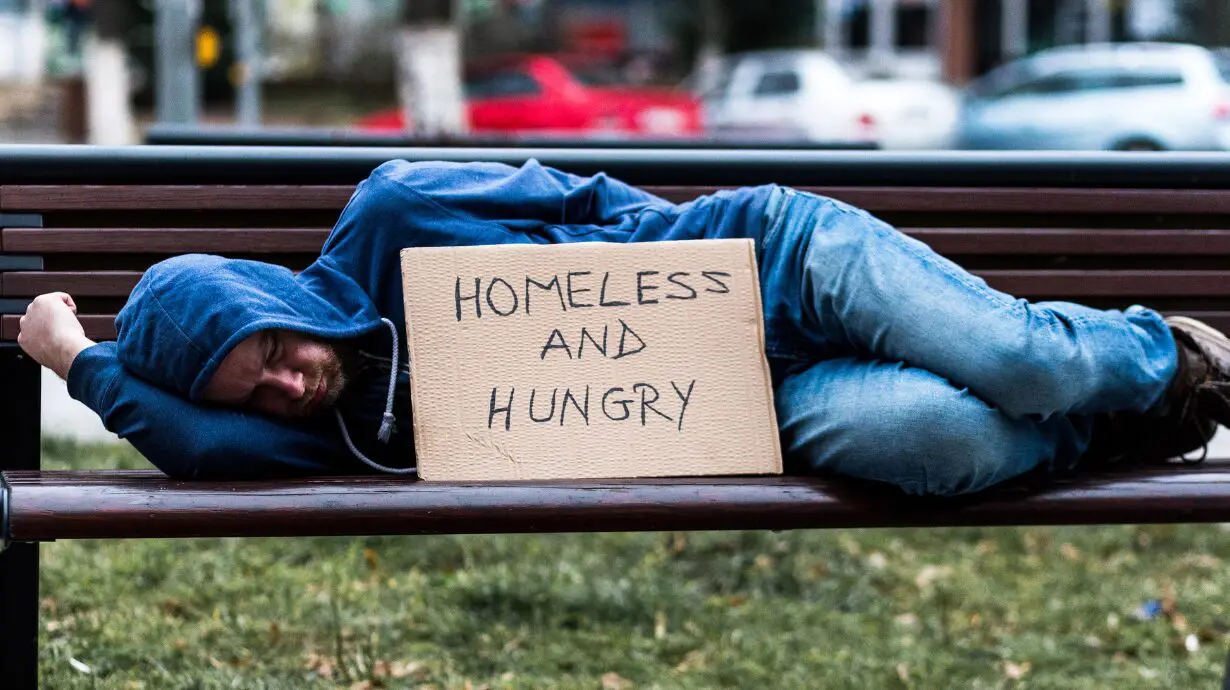Homelessness is one of the most complicated issues that California faces. A study by the Benioff Housing and Homelessness Initiative at the University of California, San Francisco (UCSF) has cleared up many false myths about California's housing problem.
In California, many people think that most homeless people are from other towns or states.
The study found that 91% of participants were California residents who were homeless, and 75% resided in the same county that they had a previous home in. Furthermore, 66% of them were from California, and 87% were from the United States.
According to Santa Clara County data, 85 percent of those who were surveyed during the 2023 point-in-time count said they resided in the county but had to leave their homes. Furthermore, 54% of the people resided in the county for a period of 10 years or longer.
People living in poverty have a higher risk of having mental health conditions and substance abuse. The study showed there was a 27-percent increase in people living in poverty with mental health issues, along with one in three who were attempting suicide at some time or another in their lives. Furthermore, 23% of patients had regular hallucinations and 25% were classified as having PTSD.
Additionally, the rate of using substances were higher for those who lived in the homeless regions. The study found that 56% used amphetamines, 33% used cocaine, and 22% had often taken non-prescribed opioids.
These numbers are completely different from the overall state population. According to research conducted by the California Health Care Foundation, only 4% of adults who live in California suffer from severe mental disorders and 9 percent show symptoms of a substance-related disorder in 2021.
A lot of people believe that many of those that make up the homeless population are veterans. The total number of homeless who are veterans is however, down by a substantial amount. The number of veterans who were homeless in California went from 16,800 from 2011, to 10,400 in 2022 due to programs offered by the government.
A new government initiative has been introduced to address homelessness among those with mental health and addiction issues. This program aims to construct thousands of new housing units, with a significant portion designated for veterans.
The UCSF study provides insight into the extent of veteran homelessness in California. Their survey found that 6% of homeless individuals in the state had served in the military. Among these veterans, only about one in five reported receiving benefits from the Veterans Administration. These figures highlight the ongoing need for targeted support for homeless veterans in California.
Another myth about the homeless is that they are poor because they do not have jobs or wish to work. The UCSF study found the fact that only 18 percent of homeless Californians said they earned income from a job in the past month. Without people over 60 or who suffer from mental or physical disabilities, the number increased at 25 percent.
Many homeless individuals face hurdles in their quest for employment, including the absence access to transportation or disabilities or criminal records, in addition to the amount of time they have to meet their basic needs in the streets. In San Francisco, 17% of homeless individuals surveyed in the 2022 count were employed and 32% of them were out of employment and looking for employment.
The latest research challenges the notion that homeless people are not in need of shelter or accommodation. In the COVID-19 outbreak, the California state's Project Roomkey program offered housing for the homeless in hotels and motels. An examination of the entire state program found that it was extensively used and that people are willing to accept shelter if it is in accordance with their requirements.
Nichole Fiore who is a senior associate of Abt Global, a Research firm Abt Global, told CalMatters in May that "people will come indoors if they are offered autonomy, safety, privacy, and the ability to keep their partners, pets, and possessions. When their needs are met, and their needs are considered, then people will come indoors."
Shaunn Cartwright, who has experience working with homeless communities for years, claims that a lot of residents would like to be moved in, but are worried about the security of their home. "Why would I go into a tiny home if I'm only going to be thrown out later? Or why would I want to go into a tiny home if there's no housing after?" she inquired.
Cartwright has also dispelled the idea about feeding people who are homeless in camps can be beneficial. She warns that this approach could cause more harm than good. "You'll just see boxes of food just sitting on a corner," Cartwright explained, "and you can tell that somebody dropped it off, but it's not necessarily what people are interested in."
Foods that aren't well-prepared can cause pests to thrive and create hygiene problems that could result in authorities conducting camp sweeps. Cartwright suggests that anyone who wants to be involved in helping the homeless should speak to them directly.
California continues to face the issue of homelessness and it is crucial to comprehend the issues that homeless people confront. By exposing the myths and looking for solutions that are supported with data as well as the community, the policymakers can develop more effective ways to tackle this complex problem.

 FDA proposes new testing rules to ensure cosmetics are asbestos-free
FDA proposes new testing rules to ensure cosmetics are asbestos-free
 NBA's Christmas Day ratings skyrocket, even going up against NFL games
NBA's Christmas Day ratings skyrocket, even going up against NFL games
 South Korea's acting president faces impeachment vote as court meets on martial law case
South Korea's acting president faces impeachment vote as court meets on martial law case
 Israel’s attorney general orders probe into Netanyahu’s wife on suspicion of witness harassment
Israel’s attorney general orders probe into Netanyahu’s wife on suspicion of witness harassment
 WHO chief says he was at Yemen airport which Israeli strikes targeted
WHO chief says he was at Yemen airport which Israeli strikes targeted
 Richard Parsons, former CEO of Time Warner, dies at 76
Richard Parsons, former CEO of Time Warner, dies at 76
 Cowboys shutting down CeeDee Lamb with 2 games to go over receiver's shoulder issue
Cowboys shutting down CeeDee Lamb with 2 games to go over receiver's shoulder issue
 NBA-Christmas Day viewership jumps as league contends with NFL-Netflix appeal
NBA-Christmas Day viewership jumps as league contends with NFL-Netflix appeal
 Homelessness is one of the most complicated issues that California faces.
Homelessness is one of the most complicated issues that California faces.






